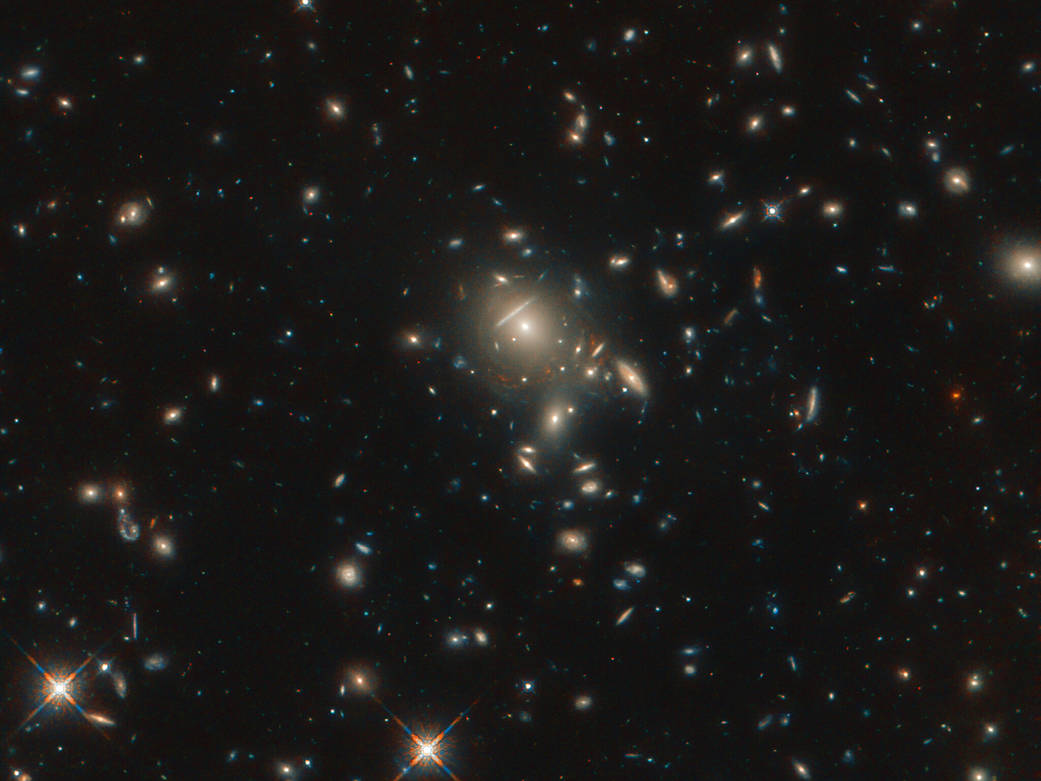Seen here in incredible detail, thanks to the NASA/ESA Hubble Space Telescope, is the starburst galaxy formally known as PLCK G045.1+61.1. The galaxy, which appears as multiple reddish dots near the center of the image, is being gravitationally lensed by a cluster of closer galaxies, also seen in the image.
Gravitational lensing occurs when a large distribution of matter, such as a galaxy cluster, sits between Earth and a distant light source. As space is warped by massive objects, the light from the distant object bends as it travels to us, creating stretched, magnified and sometimes multiple images of the lensed object. This effect was first predicted by Einstein’s general theory of relativity.
From 2009 to 2013, the European Space Agency’s Planck space observatory captured multiple all-sky surveys. In the course of these surveys, with complementary observations by the Herschel Space Observatory, Planck discovered some of the brightest gravitationally lensed, high-redshift galaxies in the night sky.
It was during the study of these Planck-Herschel selected sources using Hubble that the optical starlight emitted from this ultra-bright galaxy was found.
Text credit: ESA (European Space Agency)
Image credit: ESA/Hubble & NASA, B. Frye
感谢美国宇航局/欧空局的哈勃太空望远镜,我们在这里看到了令人难以置信的细节,这是正式名称为PLCK G045.1+61.1的星暴星系。该星系在图像中心附近以多个红色点的形式出现,正被一个更近的星系群(也可以在图像中看到)引力透镜化。
当大量物质分布在地球和遥远光源之间时,比如星系团,就会发生引力透镜效应。由于空间被巨大的物体扭曲,来自远处物体的光在向我们传播时发生弯曲,产生被透镜物体的拉伸、放大,有时甚至是多个图像。爱因斯坦的广义相对论首次预言了这种效应。
从2009年到2013年,欧洲航天局的普朗克太空天文台进行了多次全天观测。在这些观测过程中,借助赫歇尔太空天文台的补充观测,普朗克在夜空中发现了一些最引力透镜的高红移星系。
正是在使用哈勃对这些普朗克-赫歇尔选择的源进行研究的过程中,才发现了该超亮星系发出的光学星光。
文字来源:ESA (European Space Agency)
影像来源:ESA/Hubble & NASA, B. Frye




引力透镜好评!